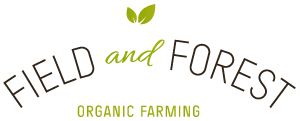
Innovative solutions for growing technologies and applications of spring medicinal and aromatic plants Nr. 1.1.1.1/18/A/043
Emerging market trends show growing demand on commercially grown aromatic and medical plants. Nine wild species with high market potential and different biological properties grow in Latvia – cowslip (Primula veris), woodruff (Galium odoratum), mezereon (Daphne mezereum), coltsfoot (Tussilago farfara), pasqueflower (Pulsatilla pratensis), lily of the valley (Convallaria majalis), ground-ivy (Glechoma hederacea), greater celandine (Chaledonium majus) and lady’s mantle (Alchemilla spp). Team of researchers and organic farming experts will explore selected medicinal and aromatic plants (MAPs) under Latvia’s agroclimatic conditions regarding their potential in commercial growing for organic farming and characteristics of their active substances.
Researchers from the Institute for Environmental Solutions in cooperation with agriculture experts and organic farming company SIA “Field and Forest”, as well as Latvian Institute of Organic Synthesis will study traditional knowledge of these MAPs, additionally, they are going to carry out assessments of the chemical composition to find new potential uses, as well as assess the MAPs suitability to commercial cultivation and use in medicine, cosmetics and food industry.
Objectives
To develop innovative technologies for growing of wild spring medicinal and aromatic plants (MAPs) under organic agriculture for potential commercial use in medicine, cosmetics and food industry.
Activities
1. Documentation and analysis of historical and existing knowledge of wild plant uses in Latvia with focus on spring plants;
2. Sampling expeditions to collect local genetic resources and to evaluate main risks for commercial growing of 9 wild spring MAPs (for example, the potential of local wild populations for cultivation, methods for improving seed germination, cultivation methods, considering biological characteristics of each species) and options for preventing the risks;
3. Study of the chemical composition and its changes between plants harvested in the wild and grew in organic farming;
4. Assessment of the impact of revealed differences on biological activity of the MAPs (in in vitro and in vivo model systems).
Solutions
Ethnobotany expeditions will acquire historical and existing knowledge about the traditional use of spring MAPs. In sampling expeditions researchers will collect local genetic resources (plant seeds and herbal drugs), which will be further studied in experimental fields. Soil composition, climatic conditions and cultivation processes may lead to significant differences in the chemical composition of plants and the biological activity of plant material. Therefore, researchers will carry out an analysis of plant composition components for plants harvested in the wild and under controlled conditions. Significant attention will be paid to potentially dangerous compounds.
Duration: March 2019 – February 2022
Leading partner: SIA “Field and Forest”
Partners: Institute for Environmental Solutions, Latvian Institute for Organic Synthesis
Project scientific manager: IES leading researcher Dr. Arta Kronberga, [email protected]
Project is financed by: European Regional Development Fund, as a part of Measure 1.1.1.1 “Industry-Driven Research” of specific objective 1.1.1 “To increase the research and innovation capacity of scientific institutions of Latvia and their ability to attract external funding by investing in human resources and infrastructure”, and project partners.
Total budget: 805 201.35 EUR. ERDF covers 570 607.85 EUR of the total budget costs.

